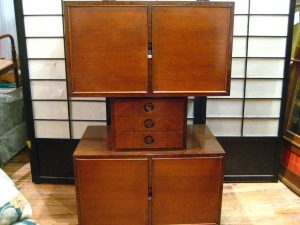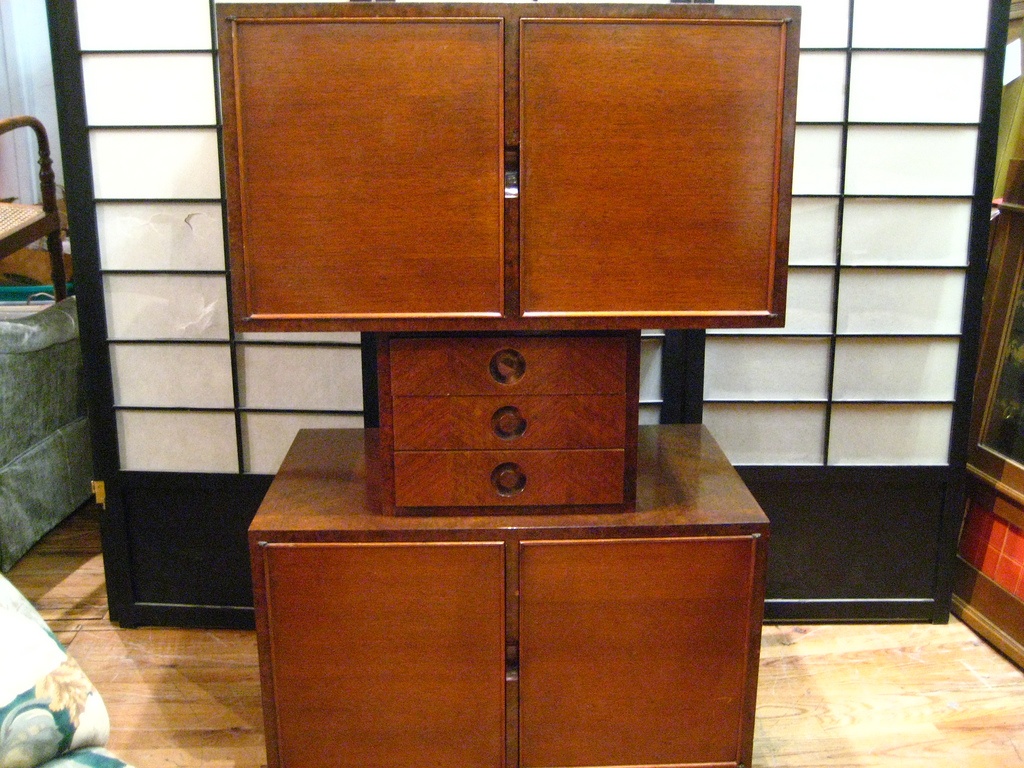Upgrading and updating a kitchen is a popular home-improvement project, adding value to a home and making it look more modern, without spending a lot of money. New kitchen cabinets can be very expensive, especially if you need custom sizes. Even replacing the cabinet doors with new doors can be a costly undertaking, as those are almost always made to order as well.
Nevertheless, a kitchen upgrade is one of the fastest and easiest ways of increasing your home’s value and appeal. Many the kitchen tends to become a place where the family congregates, so upgrading your kitchen will have a much bigger impact on your family, than many other remodeling jobs you could do.
So, what we need is a less-expensive means of upgrading the kitchen’s look, which won’t look cheap and create nice warm atmosphere. Painting the cabinets is cheap, but may not leave you with something you’d really like to live with. Fortunately, there is a much cheaper solution than replacing the cabinets or even replacing the doors; and one which will really leave your kitchen looking warm and inviting.
The solution I’m referring to is applying wood veneer to the cabinets. Many people apply laminate to their cabinet doors, which is fine, if you like that sort of look. But laminate on cabinet doors doesn’t look “rich” no matter how well it is done. Wood looks better than fake wood, and much better than many of the other patterns that are used with laminates.
Interestingly enough, the process for installing wood veneer and for installing laminates is virtually identical. So if you can do one, you can do the other. Not a lot of special tools are required and the average kitchen can be completed in a weekend.

Cabinet Resurfacing Supplies
The main thing you’re going to need, in order to resurface your cabinets, is wood veneer. This comes in three different varieties:
- Wood veneer – Thin slices of wood that are sliced from a log in a peeling action
- Composite wood veneer – The same as wood veneer, but with a paper backer, allowing less wood to be used. This makes it possible to buy more exotic woods, at a reasonable price
- Pressure sensitive wood veneer – Even thinner wood veneer with a pressure sensitive adhesive on the back, allowing it to be adhered to the cabinet doors, without the use of contact cement
I personally prefer avoiding the pressure sensitive wood veneer as the adhesive used on it isn’t as good as contact cement. If the adhesives does not stick or comes loose over time, you really have no good way of reattaching the veneer to the cabinet.
On the other hand, I like composite veneers, as they allow me to buy more exotic woods, at a more reasonable price. When you’re looking at woods like zebrawood or rosewood, costs can run high. But by buying composite veneers, you are able to use these more exotic woods, making your kitchen cabinets really stand out, for about the same price as using a more conventional wood veneer.
In addition to the veneer, you will need:
- Palm sander
- 80 or 100 grit sandpaper
- Fine sandpaper (150 to 240 grit)
- Contact cement
- Utility knife
- Long ruler/straight edge
- Bon roller
- Router with laminate bit
- Wood stain
- Polyurethane varnish
- Good quality natural bristle paintbrush
- Painter’s tape
- A heavy-bodied paint (for the edges), such as signpainter’s paint (either black or a color that goes well with the veneer you have chosen)
- A good degreaser (such as glass cleaner) and paper towels or rags
- Short-nap paint roller and tray
Resurfacing Your Cabinet Doors
To start with, you’ll need to remove the kitchen cabinet doors and the drawers from the cabinets. You’ll want to empty out the drawers, so that you can work with them easily, without worrying about spilling their contents. Then clean the cabinet doors and drawer fronts thoroughly. Kitchen cabinet doors tend to get grease baked on them, especially those that are close to the stove. You need a good clean surface for the adhesive to adhere to.
Measure your cabinet doors and drawer fronts and cut the veneer into pieces which are one inch larger in both directions than your measurements. The veneer will cut easily with a utility knife. Number the pieces on the back, as well as the doors, so that you don’t lose track of which piece fits on which door.
Sand the cabinet doors to break the existing finish and provide a “bite” for the adhesive. You don’t need to sand them down and remove the finish that is there, merely roughen up the surface. Be sure to wipe each door down as you are finished, to remove any dust and other foreign matter.
Select a door to start with and lay it and the matching piece of veneer on your work surface, which should be covered with old newspapers or something else to protect it. Apply a thin coat of the contact cement to the front of the door and the back of the veneer with the paint roller. Watch out to not leave any drips or ridges from the edge of the roller, as those tend to be visible when you are done. Be careful not to get any of the contact cement on the front side of the veneer.
Allow the contact cement about five minutes to partially dry. You want it to be tacky, rather than wet. Once tacky, you can place the veneer on the door, with the glue-coated surfaces facing each other. Be extremely careful while doing this, as once the contact cement touches, it bonds. You won’t be able to move the piece of veneer without breaking it.
One thing that might help, especially if you are covering larger doors, is to lay several dowel rods across the doors, over the tacky contact cement. You can then lay the veneer on top of these, without the contact cement touching for alignment. Once aligned, you can remove the dowel rods one at a time, sticking the two pieces together.
Working from the center outwards with the bon roller, stick the two pieces together. Rub your hands over the pieces as well, to ensure that there are no air bubbles or pieces of foreign matter trapped between the two layers. Pay particular care to ensure good adhesion along all the edges.
Once the veneer is attached to the cabinet door, it can be trimmed with the router and laminate bit. If you have any places where the veneer is sticking out more than ½” past the edges of the door, you might want to trim off the excess veneer with a utility knife, using the door as a straight edge, so that you have somewhere between ¼” and ½”, so as to make it easier to use the router, without extra material getting in the way.
Finishing the Cabinet Doors
While the veneer comes from the factory pre-sanded, you will probably want to sand the surface lightly, with a fine sandpaper, verifying that it is smooth and eliminating any ridges caused by the grain rising from moisture. This will also provide a good “bite” for the finish.
The wood veneer can either be finished the way it is or stained prior to varnishing, depending on your personal preference. Always run a test piece, on some scrap material, before staining or varnishing, so that you can see how the finish will turn out and verify that it’s going to look the way you expect it to. Stains can sometimes provide unexpected results, especially if the sample piece you viewed is a different type of wood than your project. Not only will the color of the wood affect the end result, but also the porosity of the wood, with more porous woods absorbing more of the stain.
Rather than applying veneer to the edges of the cabinet doors, I recommend painting them. Few people are actually going to see the edges of your doors, and if you paint them black or a color that matches the wood, it will go unnoticed, while setting off the surface of the door nicely.
Before painting, tape the edges of your freshly finished door with painter’s tape, to help prevent you from getting any of the paint onto the varnish. Then paint the edges, applying a heavy, but smooth coat. It is best to apply two to three coats for durability.
Cabinet Carcases
The cabinet rails and stiles, as well as the ends of the cabinet, may need to be refinished as well, depending on the style of your cabinets. If your cabinet doors totally cover the rails and stiles, it may not matter if you refinish them, as they won’t be visible. Or, you may choose to paint them with the same paint that you use on the edges of your doors.
Cabinet ends, on the other hand, are often visible, unless they have appliances pushed up against them. in such cases, you probably want to veneer them, just as you do your doors. The challenge here will be in working on a vertical surface, rather than a having it laying on a table.
You will want to tape all around these surfaces, as contact cement is permanent, once applied. So it will remain on your floors, walls or countertops. Taking the time to mask them off with painter’s tape is well worth the extra effort. If there are any electrical outlets in these surfaces, you’ll want to remove the plates and tape over the outlets as well.
The other problem with working on these surfaces is that you won’t be able to run your router all the way to the wall or floor. Rather, you will have to trim that last couple of inches by hand; first trimming it with a sharp utility knife and then going over it with a sanding block to even out any rough spots and make it match the trimmed portion of your edge.
If you need to refinish the rails and stiles to match your doors, the same procedure is used to finish them, as we just discussed. The only real difference is the size and shape of the areas to be covered. Use the existing seams in these pieces of wood as a guide, cutting your veneer so that the seams will end up in the same place. Anything else will look wrong.




